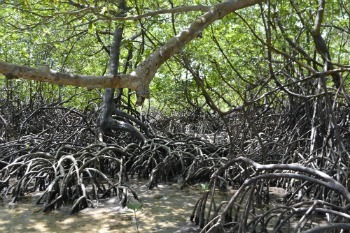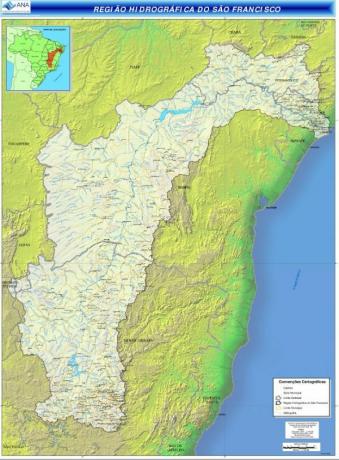In 1903 Panama declared itself independent, with the support of the United States, interested in opening the canal in the Central American isthmus.
Coffee cycle. General Rafael Reyes' term as president of the republic (1904-1909) marked the beginning of a slow economic recovery. In 1914, Colombia officially recognized Panama's independence and received compensation in the amount of $25 million paid by the United States. The increase in foreign trade, with the export of coffee and the beginning of the exploration of deposits, led to a process of industrialization and prosperity that would be interrupted by the global crisis of 1929.
The prices of coffee, oil and bananas, the main export products, fell precipitously, causing the country's economy to collapse.
The Conservative Party, in power since the end of the 19th century, lost the presidency of the republic in 1930 to the Liberal Party, which remained in government until 1946. In the elections held that year, the liberals split and launched two candidates, allowing the conservative Mariano Ospina Pérez to win. Despite being victorious in the election, the conservatives would only gain control of Congress by imposing, in 1949, the state of siege, which lasted until 1958.
The assassination of Jorge Eliécer Gaitán, leader of the workers and defeated candidate in the elections in the middle of downtown Bogotá, unleashed the biggest rebellion in Colombia's history, on the 9th of April 1948. The episode went down in the country's history under the name of bogotazo. The violence continued during the presidency of Laureano Gómez (1950-1953), who tried to implement an authoritarian regime.
In 1953, General Gustavo Rojas Pinilla led a coup d'état and, although praised as a champion of justice, was even more arbitrary than his predecessor. In an attempt to restore civilian power, liberals and conservatives formed the National Front.
In 1957 Rojas Pinilla resigned and a plebiscite incorporated the National Front agreements into the constitution. The following year, President Alberto Lleras Camargo instituted agrarian reform. In 1962 Guillermo León Valencia assumed the presidency. General Rojas Pinilla was arrested in 1963 on charges of conspiring against the regime. The economic crisis led Congress to grant extraordinary powers to Valencia.
The situation continued to worsen politically, which culminated in the reimplantation of the state of siege in 1965, after student disturbances.
In 1966, Carlos Lleras Restrepo's administration began, perhaps the most successful in Colombian history. The economy recovered on the basis of correct planning and essential political reforms. At the end of his government, the economy had an annual growth of 6.9%. In the 1970 election, Misael Pastrana Borrero won, defeating former dictator Rojas Pinilla. In the 1974 election, the presidency passed to Alfonso López Michelsen, also a liberal, whose government faced economic problems. Even so, in 1978 another liberal was elected, Julio Turbay Ayala, against whom manifestations of popular discontent and the violence of leftist guerrilla movements were allied.
In 1982, the conservative Belisario Betancur Cuartas was elected, but his national pacification campaign was thwarted by the power of drug traffickers -- the so-called Medellín cartel -- which in 1970 had established itself in the country as a power parallel. In 1989, Liberal President Virgílio Barco Vargas launched a gigantic offensive against the Medellín cartel, after the murders of a Supreme Court minister and the leading candidate in the 1990 election, Luis Carlos Galán Sarmiento. In 1993, under President César Gaviria Trujillo, the head of the cartel, Pablo Escobar, was killed while being hunted by soldiers and police. Ernesto Samper, who assumed the presidency in 1994, continued to fight drug trafficking, this time seeking to dismantle the Cali cartel.
political institutions
Colombia is a unitary republic divided into 24 departments, four intendancy and five commissariats. The president of the republic appoints the governors of the departments, intendants and commissioners. The departments have their own administrative assemblies.
The constitution of August 4, 1886, subject to several amendments, enshrines the division of powers. The president, elected for a four-year term, exercises executive power. Voting is universal for everyone over 18 years of age. Legislative power is exercised by two chambers: the Senate and the House of Representatives, also elected for four years, by universal suffrage. The judiciary is made up of judges, district courts and the supreme court. Municipalities are run by mayors and elected councils.
Society
Inequality in income distribution is one of the causes of the instability that characterizes Colombian society, country agro-exporter subordinated to the perverse relationship of international prices: low for agricultural products and high for products industrial. Wealth is concentrated in cities with pockets of poverty fed by successive waves of rural migrants. From the 1970s onwards, the country began to experience an extraordinary increase in the production and export of narcotics. The formation of powerful drug mafias contributed to complicate the situation in Colombia.
Do not stop now... There's more after the advertising ;)
A characteristic of Colombian society is its compartmentalization into regional units endowed with strong particularities. Since colonial times, each important city has constituted around it a territory of influence, with which fragmenting tendencies have been accentuated. The phenomenon, common to most of Hispanic America, not only caused long civil strife but also the temporary independence of cities like Cartagena and Cali.
Education and health. The literacy rate is high compared to other Latin American countries, which is due to the free and compulsory primary education. At the end of the 19th century, illiteracy had a rate of ninety percent.
By the end of the 1980s, this rate had dropped to 12%. Malaria and parasitic infections are endemic in the lowlands, hookworm is common. About 75% of hospitals are concentrated in cities and serve less than a third of the population. Religion. Until 1853 Catholicism was the only religion allowed, and only after the constitutional reform of 1936 was complete separation of church and state effected. Although the law protects freedom of worship, social life is strongly permeated by traditional religiosity and the clergy exerts a strong influence on society and politics. The number of Protestants, Jews and Muslims, as well as the residual focuses of the primitive Amerindian religions, are very small.
Culture
Literature. In colonial times, despite the existence of two universities in Bogotá and the economic prosperity of the criollos, New Granada has not known a literary flowering similar to that of New Spain (Mexico) or the Peru. In the last decades before independence there was great cultural unrest, but not great authors. Francisco José de Caldas, Antonio Nariño, Francisco Antonio Zea and Camilo Torres are remembered more as heroes of the struggle for independence than as scientists or literati. Most nineteenth-century writers had more local than national roots and often practiced costumbrismo, or custom literature. Jorge Isaacs published María, in 1867, one of the most read novels in Spanish America.
At the beginning of the 20th century, the Parnassian poet Guillermo Valencia stood out.
In 1924, La vorágine (The torrent) was published, the only novel by José Eustasio Rivera, the precedent of a typically Latin American genre that gained momentum in the second half of the 20th century. The most outstanding figure in Colombian literature is Gabriel García Márquez, Nobel Prize in 1982 and author of Cien años de soledad (1967; One hundred years of Solitude). His influence was dominant in the country's literature and throughout Latin America. With fantastic realism, it caused a renewal in the Colombian novel.
Visual arts. The Chibcha people had the most developed culture when the conquerors arrived in Colombian territory. They distinguished themselves in jewelery with the use of the so-called tumbaga, an alloy of gold and copper that could also contain silver.
The Quimbayá peoples of the Cauca Valley had an even greater domain of goldsmithing. Pre-Columbian architecture did not develop in Colombian territory as in Central America and Peru. The mysterious culture of San Agustín, long before the conquest, left remarkable traces.
Colonial art is present in the main Colombian cities and stands out in historic buildings, churches and convents in Bogotá. Cartagena has a notable colonial district, such as the convent of Santo Domingo, the House of the Inquisition and fortifications designed by the Italian Bautista Antonelli.
The sculpture, a follower of the Sevillian school, has one of its examples in the main altarpiece of the church of San Francisco de Bogotá, carved in the first half of the 17th century by an unknown author.
Colonial painting did not shine as much in New Granada as in Quito or Cuzco, but it had its great figure, in the 17th century, in Gregorio Vázques de Arce y Ceballos, main representative of a group of painters very influenced by Zurbarán and Murillo. In the city of Tunga there was a great development of mural painting in the 16th and 17th centuries.
From the 1920s onwards, Colombian painting, still immobilized by the academicism of the previous century, had a nationalist awakening, under the influence of revolutionary Mexican painting. In the second half of the 20th century, art became more linked to international movements. Artists such as Alejandro Obregón, Eduardo Ramírez Villamizar and Fernando Botero became well-known.
Song. The European influence has been evident in Colombian music since colonial times, when the Italian Jesuit José Dadey, from the 17th century, and Juan de Herrera y Chumacero, from the 18th, stood out. Enrique Price and José María Ponce de León, 19th century composers, were precursors of nationalism musical that reached its peak with Guillermo Uribe Holguín, romantic author by training European. His main followers, in the following century, were Jesús Bermúdez Silva, José Rozo Contreras, Antonio María Valencia and Carlos Posada Amador.



